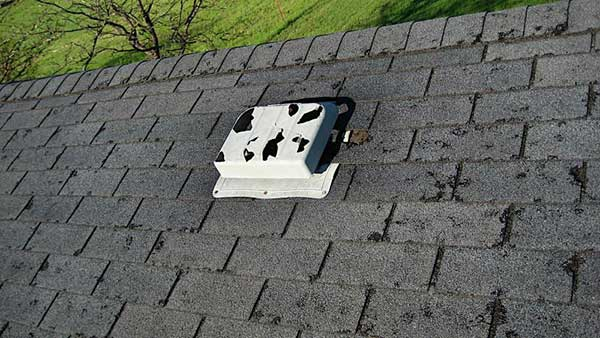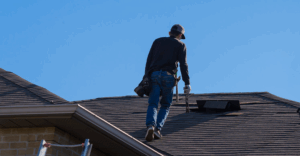Hailstorms can be sudden and destructive, often leaving behind a trail of damage to vehicles, homes, and businesses. For property owners, the aftermath of a hailstorm typically involves evaluating the extent of the damage and searching for reliable hail damage repair services nearby. While the immediate concern may be fixing dents and cracks, there are seasonal challenges that can significantly impact the repair process. Understanding these seasonal factors can help you make informed decisions and ensure the longevity of your property restoration.
Spring and Summer: Prime Time for Hailstorms
 In many regions, hailstorms are most frequent during the spring and summer months. Warmer temperatures combined with turbulent weather patterns create the perfect environment for hail formation. As a result, these seasons see a spike in hail damage cases. While it may be easier to schedule inspections during these warmer months, the increased demand for repair services can lead to longer wait times and higher service costs.
In many regions, hailstorms are most frequent during the spring and summer months. Warmer temperatures combined with turbulent weather patterns create the perfect environment for hail formation. As a result, these seasons see a spike in hail damage cases. While it may be easier to schedule inspections during these warmer months, the increased demand for repair services can lead to longer wait times and higher service costs.
Spring also brings heavy rains and occasional flooding, which can complicate hail damage. If water seeps through cracks caused by hail, it may lead to mold growth or structural weakening in roofs and walls. Summer heat, on the other hand, can accelerate the degradation of already damaged surfaces, especially on roofs and cars. Acting quickly after a storm is crucial, but so is choosing the right time and conditions for thorough repairs.
Fall Repairs: A Narrow Window of Opportunity
Fall is often considered a transitional period for weather, with temperatures cooling and storms becoming less frequent. This can make it a more favorable season for hail damage repairs. The moderate temperatures are ideal for materials like roofing shingles or automotive paint to cure properly. However, as the days get shorter and the weather becomes more unpredictable, time becomes a critical factor.
Contractors are often trying to wrap up projects before winter, which can create a surge in demand. It’s wise to schedule repairs as early in the fall as possible to avoid delays. Additionally, the falling leaves and debris can obstruct damage assessments or slow down repairs if they accumulate on roofs and gutters. Proper cleaning and preparation are essential before any repair work begins during this season.
Winter Woes: Delays and Dangers
Winter poses the most challenges when it comes to repairing hail damage. Cold temperatures can interfere with materials bonding properly, especially for roof repairs or exterior home improvements. Snow and ice also make it unsafe for workers to inspect or climb on structures, leading to postponed projects or incomplete evaluations.
If hail damage occurred earlier in the year and was left unattended, winter can worsen the condition. Freezing temperatures may cause small cracks to expand, leading to leaks or further weakening of surfaces. Ice dams forming on roofs can add to the stress on an already compromised structure, potentially leading to bigger issues like collapses or severe water intrusion.
In regions with heavy snowfall, hail damage might remain unnoticed until spring, when the thaw reveals the full extent of deterioration. This delayed discovery can increase repair costs and may require more extensive fixes. Homeowners should consider scheduling an inspection even if they don’t see obvious damage, especially after a heavy hailstorm.
Availability and Scheduling Challenges Across Seasons
One of the most consistent seasonal challenges when looking for hail damage repair near you is the availability of skilled contractors. During peak hailstorm seasons, local services can quickly become overwhelmed, and finding an available, reputable contractor may require patience and flexibility.
 It’s important to book appointments as soon as possible after noticing damage. Waiting too long can not only worsen the problem but also reduce your chances of getting a spot with top-rated professionals. Many homeowners and car owners face the frustration of being placed on long waiting lists, especially in regions where storms are frequent and severe.
It’s important to book appointments as soon as possible after noticing damage. Waiting too long can not only worsen the problem but also reduce your chances of getting a spot with top-rated professionals. Many homeowners and car owners face the frustration of being placed on long waiting lists, especially in regions where storms are frequent and severe.
Insurance processing can also be delayed during peak seasons. When multiple claims are filed in the same area, adjusters may take longer to assess damage, and this can push back repair timelines. Staying proactive and documenting the damage thoroughly can help streamline the process.
How to Stay Prepared
While it’s impossible to prevent hailstorms, being prepared can reduce the stress of managing repairs. Regularly inspecting your home or vehicle and keeping a record of their condition can be useful if you need to file an insurance claim. Researching local repair services in advance and knowing who to call when disaster strikes can save you valuable time when you’re dealing with the aftermath of a storm.
